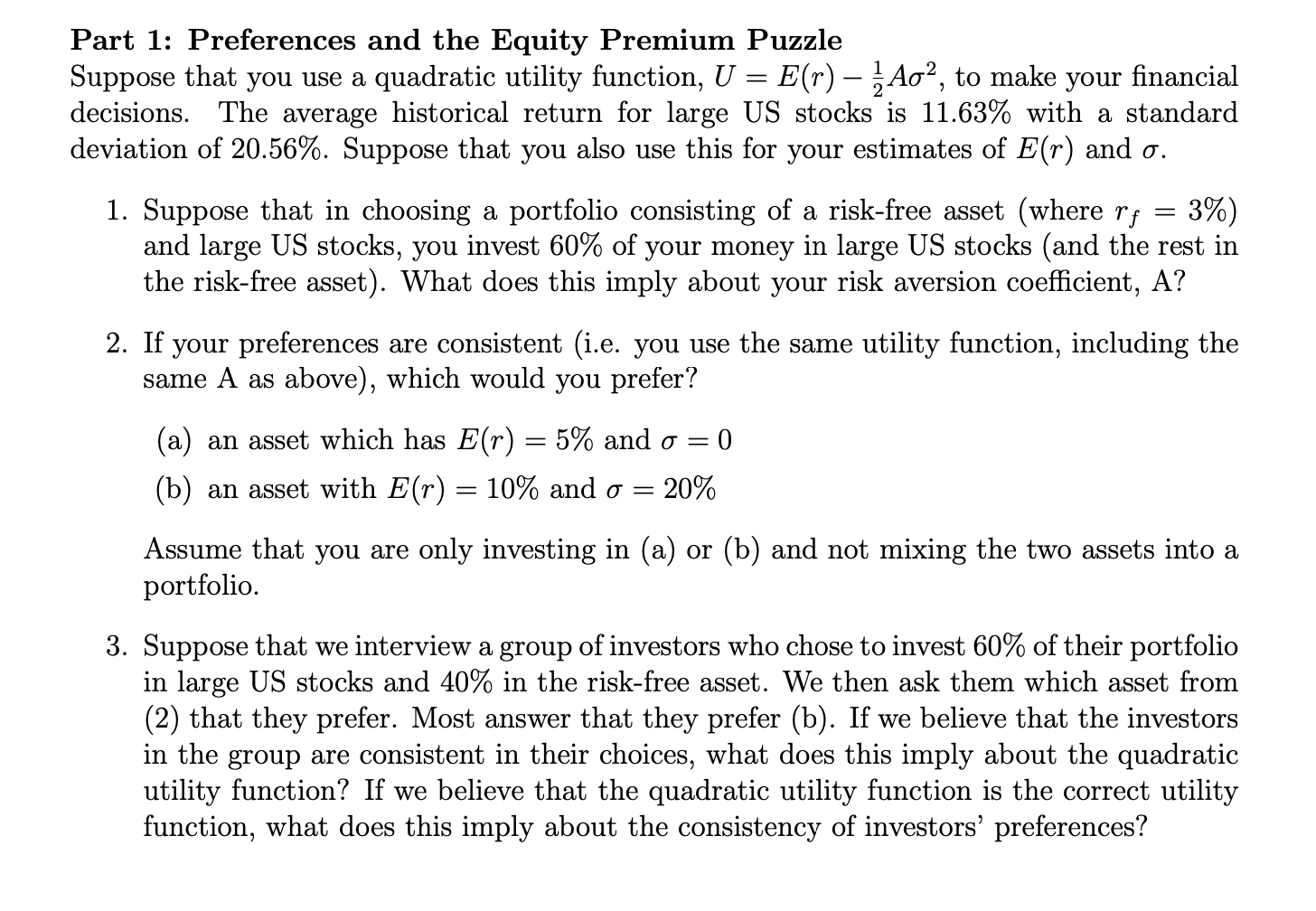
= Part 1: Preferences and the Equity Premium Puzzle Suppose that you use a quadratic utility function, U = E(r) Ao2, to make your financial decisions. The average historical return for large US stocks is 11.63% with a standard deviation of 20.56%. Suppose that you also use this for your estimates of E(r) and o. 1. Suppose that in choosing a portfolio consisting of a risk-free asset (where rf 3%) and large US stocks, you invest 60% of your money in large US stocks (and the rest in the risk-free asset). What does this imply about your risk aversion coefficient, A? 2. If your preferences are consistent (i.e. you use the same utility function, including the same A as above), which would you prefer? (a) an asset which has E(r) = 5% and o = = 0 (b) an asset with E(r) = 10% and o = 20% Assume that you are only investing in (a) or (b) and not mixing the two assets into a portfolio. 3. Suppose that we interview a group of investors who chose to invest 60% of their portfolio in large US stocks and 40% in the risk-free asset. We then ask them which asset from (2) that they prefer. Most answer that they prefer (b). If we believe that the investors in the group are consistent in their choices, what does this imply about the quadratic utility function? If we belie that the quadratic utility function is the correct utility function, what does this imply about the consistency of investors' preferences? = Part 1: Preferences and the Equity Premium Puzzle Suppose that you use a quadratic utility function, U = E(r) Ao2, to make your financial decisions. The average historical return for large US stocks is 11.63% with a standard deviation of 20.56%. Suppose that you also use this for your estimates of E(r) and o. 1. Suppose that in choosing a portfolio consisting of a risk-free asset (where rf 3%) and large US stocks, you invest 60% of your money in large US stocks (and the rest in the risk-free asset). What does this imply about your risk aversion coefficient, A? 2. If your preferences are consistent (i.e. you use the same utility function, including the same A as above), which would you prefer? (a) an asset which has E(r) = 5% and o = = 0 (b) an asset with E(r) = 10% and o = 20% Assume that you are only investing in (a) or (b) and not mixing the two assets into a portfolio. 3. Suppose that we interview a group of investors who chose to invest 60% of their portfolio in large US stocks and 40% in the risk-free asset. We then ask them which asset from (2) that they prefer. Most answer that they prefer (b). If we believe that the investors in the group are consistent in their choices, what does this imply about the quadratic utility function? If we belie that the quadratic utility function is the correct utility function, what does this imply about the consistency of investors' preferences







